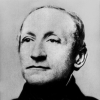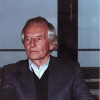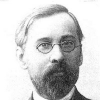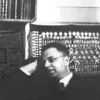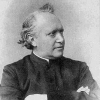Тимоти Миллер (англ. Timothy S. Miller; род. 1944) — американский историк религии, специалист по новым религиозным движениям и истории коммунитаризма.
Биография
В 1966 году Канзасском университете получил бакалавра гуманитарных наук по антиковедению.
В 1967 году поступил в Тафтский университет, но не окончил его.
В 1967—1968 годы — ассистент по греческому языку в Крозерской теологической семинарии.
В 1968 году в Крозерской теологической семинарии получит степень магистра богословия по истории религии.
В 1969 году в Канзасском университете получил степень магистра гуманитарных наук по религиоведению, в 1971 году магистра философии по американистике защитив диссертацию по теме «Американские протестантские миссии в Греции в 1828—1969», а в 1973 году доктора философии по американистике защитив диссертацию по теме «Этика и контркультуа».
В 1969—1973 годы — помощник преподавателя по религиоведению и американистике Канзасского университета.
В 1973—1988 годы — преподаватель религиоведения Канзасского университета.
В 1988—1993 годы — старший преподаватель религиоведения Канзасского университета.
В 1993—1998 годы — адъюнкт-профессор религиоведения Канзасского университета.
В 1995 году был приглашённым адъюнкт-профессором по религиоведению в Дартмутском колледже
С 1998 года — профессор кафедры религиоведения Канзасского университета.
Научные труды
Монографии
- Miller Timothy. Ethics and the counter culture. — University of Kansas, 1973.
- Miller Timothy. Following in his steps: a biography of Charles M. Sheldon. — University of Tennessee Press, 1987. — ISBN 9780870495373.
- Miller Timothy. American communes, 1860-1960: a bibliography. — Garland Publications, 1990. — ISBN 0-8240-8470-5.
- Miller Timothy. The hippies and American values. — University of Tennessee Press, 1991. — ISBN 9780870496943.
- Miller Timothy. America's Alternative Religions. — SUNY Press, 1995. — ISBN 9780791423974.
- Miller Timothy. The Quest for Utopia in Twentieth-century America: 1900-1960. — Syracuse University Press, 1998. — ISBN 0-8156-2775-0.
- Miller Timothy. The 60s Communes: Hippies and Beyond. — Syracuse University Press, 1999. — ISBN 9780815606017.
- Miller Timothy. When prophets die: the postcharismatic fate of new religious movements. — SUNY Press, 1999. — ISBN 0-7914-0717-9.
- Miller Timothy, co-author with Richard Fairfield and Alan Watts. The Modern Utopian: Alternative Communities Then and Now. — Process, 2010. — ISBN 1-934170-15-1.
Статьи
В журналах и сборниках
- Miller T. Whither Unity? A Case Study // Christian Century. — 1970. — P. 891-93.
- Miller T. Religion and Populism: A Reassessment // -The Scholarly Journal of Kansas School ofReligion at The University of Kansas. — 1971. — P. 1-5.
- Miller T., Yetman N. R. Liberated Churches: A Profile // -The Journal of Kansas School of Religion at TheUniversity of Kansas. — 1974. — P. 1-4.
- Miller T. Ethics, Economics, and the Farm Protest // Christian Century. — 1978. — P. 644-46.
- Miller T. The Sects and Cults: A Dissenting Evaluation // Religion Journal of Kansas. — 1979. — Т. 16, № 4. — P. 5-11.
- "Families Within a Family: Spiritual Values of Hutterites and Unificationists," in The Family and the Unification Church, ed. Gene L. James (New York: Unification Theological Seminary/Rose of Sharon Press, 1983), pp. 53-65.
- Miller T. // Religion Journal of Kansas."Charles M. Sheldon's In His Steps: Kansas's Great Accidental Bestseller," 21:2 (February, 1984), pp. 1-6.
- Miller T. Charles M. Sheldon and the Uplift of Tennesseetown // Kansas History. — 1986. — Т. 9, № 1. — P. 125-37.
- Miller T. A Guide to the Literature on the Hutterites // Communal Societies. — 1990. — Т. 10. — P. 68-86.
- "They Found a Formula: 450 Years of Hutterite Communitarianism," in When Prophets Die: The Postcharismatic Fate of New Religious Movements (Albany: State University of New York Press, 1991), pp. 79-91.
- Miller T. Drop City: Historical Notes on the Pioneer Hippie Commune // -Journal of AlternativeReligion and Culture. — 1992. — Т. 1, № 1. — P. 23-38.
- Miller T. Are the Moonies Latter-Day Mormons? // Studia Missionalia. — Rome: Pontifical Gregorian University, 1992. — № 41. — P. 69-83.
- Miller T. The Roots of the 1960s Communal Revival // American Studies. — 1992. — Т. 33, № 2. — P. 73-93.
- "Peter Cornelius Plockhoy and the Beginnings of the American Communal Tradition," in Ron Sakolsky and James Koehnline, eds., Gone to Croatan: Origins of North American Dropout Culture (New York: Autonomedia, 1993), pp. 117-26.
- "Introduction" to America's Alternative Religions (Albany: State University of New York Press, 1995), pp. 1-10.
- "Black Jews and Black Muslims," America's Alternative Religions (Albany: State University of New York Press, 1995), pp. 277-283.
- "The Evolution of Hippie Communal Spirituality: The Farm and Other Hippies Who Didn't Give Up," America's Alternative Religions (Albany: State University of New York Press, 1995; with Albert Bates), pp. 371-377.
- Seven section introductions to America's Alternative Religions (Albany: State University of New York Press, 1995), 8 pp.
- Two appendices to America's Alternative Religions (Albany: State University of New York Press, 1995), pp. 417-442.
- Miller T. Artists Colonies as Communal Societies in the Arts and Crafts Era // Communal Societies. — 1996. — № 16. — P. 43-70.
- Miller T. Academic Integrity and the Study of New Religious Movements: Introduction // Nova Religio. — 1998. — Т. 2, № 1. — P. 8-15.
- "'Cults' and Intentional Communities: Working Through Some Complicated Issues," Communities Directory: A Guide to Intentional Communities and Cooperative Living (Rutledge, Missouri: Fellowship for Intentional Community, 2000), pp. 30-32; reprinted in a later edition, Communities Directory: A Comprehensive Guide to Intentional Communities and Cooperative Living (Rutledge, Missouri: Fellowship for Intentional Community, 2005), pp. 30-32.
- “Lessons from the History of Ideologically Committed American Communes,” published in CD-ROM edition of conference proceedings, The Stockholm International Forum: Combating Intolerance, July, 2001.
- “Out to Save the World: Why Communal Studies Matters for the Twenty-First Century,” published in Communal Living on the Threshold of a New Millennium: Lessons and Perspectives (Proceedings of the Seventh International Communal Studies Conference); e-book published by the International Communal Studies Association, September, 2001. Located at www.ic.org/ICSA/docs/ICSA_eBook.pdf. Reprinted in abbreviated form in the Bulletin of the International Communal Studies Association no. 30 (2001), pp. 3-4; also reprinted in abbreviated form in C.A.L.L.: Communes at Large Letter #17 (Winter, 2001-200), 20.
- “The Historic Roots of Sustainability in Communities,” in Contemporary Utopian Struggles: Communities between Modernism and Postmodernism, ed. Saskia Poldervaart, Harrie Jansen, and Beatrice Kesler (Amsterdam: Aksant, 2001), pp. 225-235.
- "The Sixties-Era Communes," in Imagine Nation: American Cultural Radicalism of the 1960s and '70s, ed. Peter Braunstein and Michael William Doyle (New York: Routledge, 2002), pp. 327-351.
- “Controversial Christian Movements: History, Growth, and Outlook,” in New Religious Movements and Religious Liberty in America, ed. Derek H. Davis andBarry Hankins (Waco, Texas: J. M. Dawson Institute of Church-State Studies and Baylor University Press, 2002; second edition, 2003), pp. 1-19.
- “Total Freedom of Conscience: What Happens When There Are No Rules at All?” published in cyberproceedings of the 2002 conference of CESNUR (Center for Studies on New Religions) at http://www.cesnur.org/2002/slc/miller.htm
- "The Historical Communal Roots of Ultraconservative Groups: Earlier American Communes That Have Helped Shaped Today's Far Right," in The Cultic Milieu: Oppositional Subcultures in an Age of Globalization, ed. Jeffrey Kaplan and Helene Low (Walnut Creek, California: AltaMira, 2002), pp. 75-109.
- Theme article for the New Religious Movements website: “Religious Movements in the United States: An Informal Introduction.” E-published at religiousmovements.lib.virginia.edu in 2004. New Religious Movements: New Religious Movements in the United States,” in Encyclopedia of Religion, second edition, ed. Lindsay Jones (Detroit: Thompson Gale, 2005), pp. 6556-6566.
- “Notes on the Prehistory of the Human Potential Movement: The Vedanta Society and Gerald Heard’s Trabuco College,” in On the Edge of the Future: Esalen and the Evolution of American Culture, ed. Jeffrey J. Kripal and Glenn W. Shuck (Bloomington: Indiana University Press, 2005), pp. 80-89.
- “Charles M. Sheldon: Pastor, Author, and Passionate Social Reformer,” in John Brown to Bob Dole: Movers and Shakers in Kansas History, ed. Virgil W. Dean (Lawrence: University Press of Kansas, 2006), pp. 140-51.
- “New Religious Movements in American History,” in Introduction to New and Alternative Religions in America, ed. Eugene V. Gallagher and W. Michael Ashcraft (Westport, Connecticut: Greenwood, 2006), volume 1, pp. 1-22.
- Miller T. The Evolution of American Spiritual Communities // Nova Religio. — 2010. — Т. 13, № 3. — P. 14-33.
- Miller T. A Matter of Definition: Just What Is an Intentional Community? // Communal Societies. — 2010. — Т. 30, № 1. — P. 1-15.
- Miller T. New Religions Drawing Followers and Conflict in Europe, Eastern Europe // Religion Watch. — 1993. — Т. 8, № 6.
- Miller T. Stress and Conflict in an International Religious Movement: The Case of the Bruderhof // KIT Newsletter. — 1993. — Т. 5, № 7.
- Miller T. Church Universal and Triumphant at a Turning Point // Royal Teton Ranch News. — 1993. — Т. 5, № 5.
- "Misinterpreting Religious Commitment," in James R. Lewis, ed., From the Ashes: Making Sense of Waco (Lanham, Maryland: Rowman and Littlefield, 1994). Previously distributed to newspapers by Pacific News Service as "America Divides Over What Religious Commitment Means," April, 1993.
- Miller T. „Cult“ as a Useless Word, // -Journal of Cooperative Living. — 1995. — № 88.
- Miller T. The „Cult“ Scare Is Nothing New // -Journal of Cooperative Living. — 1995. — № 88.
- Miller T. The Procession of Bigotry // -Journal of Cooperative Living. — 1995. — № 88.
- Miller T. Identifying 'Cults': Those Lists of Generalizations // -Journal of Cooperative Living. — 1995. — № 88.
- Miller T. A Few Commonsense Suggestions // -Journal of Cooperative Living. — 1995. — № 88.
- Miller T. Research note: "A Response to Mukunda Goswami's NRM Is a Four-Letter Word: The Language of Oppression // ISKCON Communications Journal. — 1996. — Т. 4, № 1.
- Miller T. Our Beliefs, Our Lives: Communitarian Activists in the Early Twentieth Century // Journal of Cooperative Living. — 1998. — № 100. — P. 54-57.
- Miller T. Communities in the 20th Century // -Journal of Cooperative Living. — 1999. — № 105. (reprinted in C.A.L.L.: Communes at Large Letter no. 17 (Winter, 2000-01)
- Miller T. Anniversaries // Communique (newsletter of the Communal Studies Association). — 2000. — Т. 25, № 2.
- Miller T. Difference in Religious Practices Doesn’t Mean They’re Wrong // Florida Today. — 24.03.2002.
- “Out to Save the World: Scholars and the Utopian Vision,” in Utopia Matters: Theory, Politics, Literature and the Arts, ed. Ftima Vieira and Marinela Freitas (Porto, Portugal: Editora da Universidade do Porto, 2005), pp. 33-36.
- Miller T. No Oil: The coming Utopia/Dystopia and Communal Possibilities // Spaces of Utopia: An Electronic Journal. — Faculdade de Letras at the University of Porto, 2006. — № 1.
- Miller T. A Short Visit to Israel // Bulletin of the International Communal Studies Association. — 2006. — № 39. — P. 8. .
- “Foreword” and “Afterword: What Happened to the Communes?” in The Modern Utopian, ed. Richard Fairfield (Port Townsend, Washington: Process, 2010), pp. 13-18, 320-323.
- “A Communitarian Conundrum: Why a World That Wants and Needs Community Doesn’t Get It.” Communities no. 151 (Summer, 2011), pp. 60-65.



